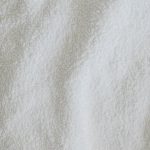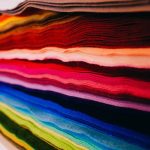So, you're on the hunt for the ultimate fabric, huh? Well, look no further because we're diving into the showdown between broadcloth and oxford cloth.
When it comes to fabric mastery, understanding the nuances of these two contenders is crucial. From weave and texture to durability and breathability, each fabric brings its A-game.
Get ready to embark on a journey of fabric analysis, as we dissect every aspect to determine the ultimate winner. Whether you're a seasoned fabric connoisseur or just starting to explore the world of textiles, this comparison will equip you with the knowledge needed to make an informed decision.
Let's unravel the intricacies and crown the fabric champion!
Key Takeaways
- Broadcloth is known for its durability, fabric strength, and tight weave resulting in a smooth, lustrous surface.
- Oxford cloth is favored for its casual appeal, relaxed texture, and unique basket-weave structure that gives it a more substantial feel.
- Broadcloth tends to be more durable than oxford cloth due to its tightly-knit weave and stronger threads.
- Broadcloth is suitable for both formal and casual wear, while oxford cloth is often favored for more casual attire.
Fabric Characteristics
When evaluating broadcloth vs oxford cloth, consider the fabric characteristics to determine the best choice for your needs.
Broadcloth is known for its durability and fabric strength, making it a popular choice for formal shirts and suiting. Its tight weave results in a smooth, lustrous surface that drapes well and resists wrinkles, making it a great option for a polished look.
On the other hand, oxford cloth is favored for its casual appeal and relaxed texture. The unique basket-weave structure of oxford cloth gives it a more substantial feel compared to broadcloth, making it a great choice for more laid-back styles such as casual shirts.
Both fabrics offer a variety of color options to suit different preferences. Broadcloth typically comes in a wide range of solid colors, making it versatile for various formal occasions. In contrast, oxford cloth often features a more casual, textured appearance and is commonly seen in striped or patterned designs, adding a touch of character to casual outfits.
Consider the fabric strength and color options when deciding between broadcloth and oxford cloth to ensure that your choice aligns with your specific style and needs.
Weave and Texture
To evaluate the weave and texture of broadcloth vs oxford cloth, examine the distinct characteristics that contribute to the feel and appearance of each fabric. Weave types play a crucial role in determining the visual appeal and tactile experience of a fabric. Broadcloth is woven using a simple over-one-under-one pattern, resulting in a smooth and lustrous surface. On the other hand, oxford cloth is woven with a basketweave pattern, creating a more textured and substantial feel. The texture of broadcloth is finer and more delicate, giving it a sleek and elegant appearance, while oxford cloth has a more casual and rugged look due to its visibly textured weave.
Let's take a closer look at the weave and texture of broadcloth vs oxford cloth in the table below:
| Characteristic | Broadcloth | Oxford Cloth |
|---|---|---|
| Weave Type | Over-one-under-one pattern | Basketweave pattern |
| Visual Appeal | Smooth and lustrous | Textured and substantial |
Understanding the weave and texture of these fabrics allows you to make an informed decision based on the specific look and feel you desire for your garments.
Durability and Longevity
How exactly does the durability and longevity of broadcloth compare to that of oxford cloth?
When it comes to durability comparison, fabric strength is a crucial factor to consider.
Broadcloth, woven tightly with a fine yarn, tends to be more durable than oxford cloth. Its smooth texture and closely-knit weave contribute to its strength, making it less prone to fraying or tearing.
On the other hand, oxford cloth, while still durable, may not be as strong as broadcloth due to its looser weave and heavier yarn. This can result in a slightly lower resistance to wear and tear over time.
Additionally, the finer threads used in broadcloth contribute to its longevity, as they're less susceptible to breakage compared to the thicker threads commonly found in oxford cloth.
Despite this, both fabrics can still have impressive lifespans with proper care and maintenance.
It's also important to note that the specific quality of the fabric and the intended use will ultimately play a significant role in determining their overall durability and longevity.
Breathability and Comfort
For breathability and comfort, consider the weave and weight of broadcloth and oxford cloth to determine which fabric best suits your needs.
Broadcloth, with its tight weave and smooth, lightweight feel, offers excellent breathability, making it a great choice for warmer climates or indoor wear. Its ability to wick moisture away from the body keeps you feeling comfortable throughout the day.
On the other hand, oxford cloth, known for its more textured, basket-weave construction, provides a soft and plush feel, offering exceptional comfort against the skin. While not as breathable as broadcloth, oxford cloth still allows for sufficient airflow, making it suitable for a wide range of temperatures. The slightly heavier weight of oxford cloth also adds to its comfort, providing a cozy and substantial drape.
Both fabrics offer different levels of breathability and comfort, so your choice may depend on your specific preferences and the intended use of the garment. Whether you prioritize breathability, moisture-wicking properties, or softness, understanding the characteristics of broadcloth and oxford cloth will guide you in making the best decision for your comfort needs.
Versatility and Use Cases
Consider the versatility and use cases of broadcloth and oxford cloth to determine which fabric best suits your needs. When comparing the two, it's essential to evaluate their versatility and the specific use cases where each fabric excels.
- Versatility Comparison:
Broadcloth is known for its versatility, making it suitable for both formal and casual wear. Its smooth texture and lightweight nature allow it to be used for a wide range of clothing items, from dress shirts to blouses.
On the other hand, oxford cloth, with its more textured appearance and slightly heavier weight, is often favored for more casual attire such as button-down shirts and casual dresses.
- Use Case Analysis:
Broadcloth's versatility makes it an excellent choice for those looking for a fabric that can seamlessly transition from professional settings to more relaxed environments.
Oxford cloth, with its more casual and rugged appearance, is ideal for creating a laid-back yet polished look, making it a great option for weekend wear or business casual settings.
Understanding the versatility and use cases of both broadcloth and oxford cloth will help you make an informed decision when choosing the fabric that best aligns with your wardrobe needs.
Care and Maintenance
When it comes to caring for your broadcloth or oxford cloth garments, it's important to follow specific guidelines to ensure their longevity and quality. Proper care and maintenance not only preserve the fabric but also maintain the crisp and polished look that these fabrics are known for. Below are essential care tips for both broadcloth and oxford cloth:
| Care Tips | Broadcloth | Oxford Cloth |
|---|---|---|
| Washing Techniques | Machine wash in cold water with a gentle cycle | Can be machine washed, but use a delicate cycle |
| Ironing Methods | Iron on low to medium heat with steam | Use a warm iron with steam for best results |
| Stain Removal | Treat stains promptly and gently with mild soap | Blot stains with a damp cloth, then air dry |
| Storage Tips | Hang on broad, padded hangers to avoid creases | Fold neatly and store in a cool, dry place |
Following these care tips will ensure that your broadcloth and oxford cloth garments remain in excellent condition for years to come. Remember to always check the care label on your specific garment for any fabric-specific recommendations.
Frequently Asked Questions
Can I Use Broadcloth or Oxford Cloth for Making Outdoor Gear Such as Tents or Backpacks?
You can use both broadcloth and oxford cloth for making outdoor gear like tents or backpacks. Broadcloth offers a smoother finish and good durability, while oxford cloth provides better performance in terms of breathability and water resistance.
Are There Any Specific Environmental Considerations to Keep in Mind When Choosing Between Broadcloth and Oxford Cloth?
When choosing between broadcloth and oxford cloth, it's crucial to consider the environmental impact and sustainability of your fabric choices. This decision will impact outdoor gear, home decor, custom printing, fabric design, and dyeing options.
Can These Fabrics Be Used for Upholstery or Home Decor Purposes?
When considering fabric for upholstery or home decor, it's crucial to weigh the pros and cons of broadcloth vs. Oxford cloth. Each has unique properties affecting durability, texture, and style, making them suitable for different design needs.
Are There Any Specific Design or Pattern Options Available for Broadcloth and Oxford Cloth?
When it comes to design options and pattern choices, broadcloth and oxford cloth offer a variety of possibilities. Both fabrics can be found in solid colors, stripes, checks, and other intricate patterns, providing ample versatility for your projects.
Can These Fabrics Be Dyed or Printed With Custom Designs at Home?
You can achieve custom designs on broadcloth and oxford cloth through DIY dyeing and custom printing. With the right materials and techniques, you can personalize these fabrics at home, adding a unique touch to your creations.
- Does Chiffon Fabric Stink - July 15, 2025
- Does Chiffon Fabric Affect the Economy - July 15, 2025
- Does Cotton Fabric Have a Nap - July 15, 2025







